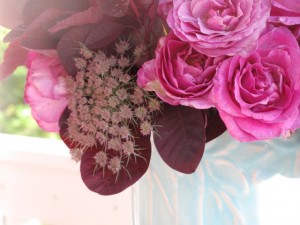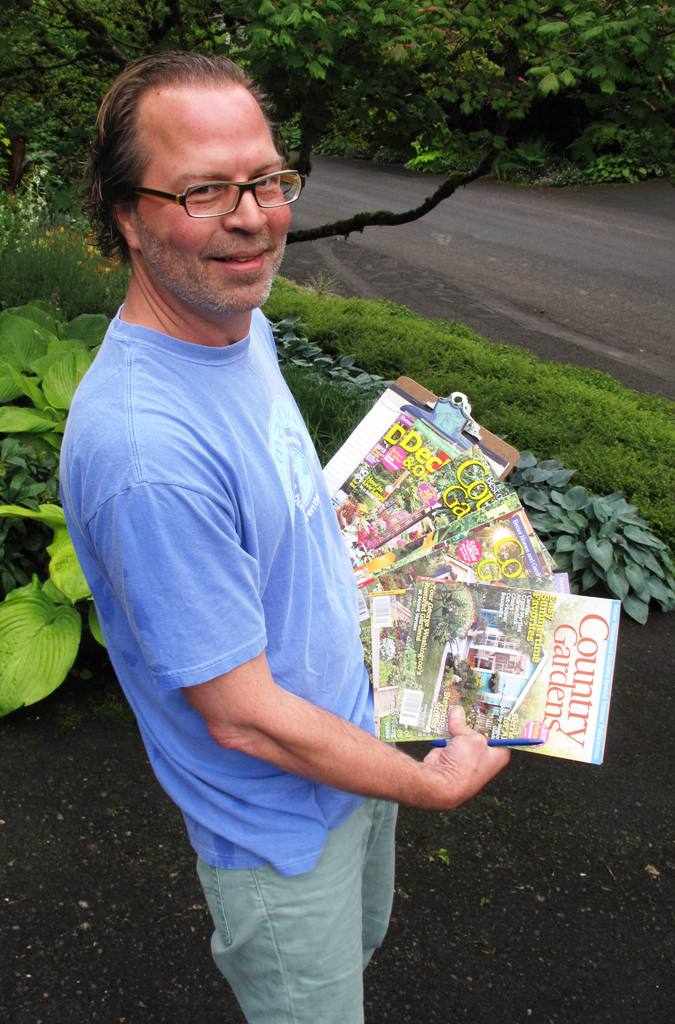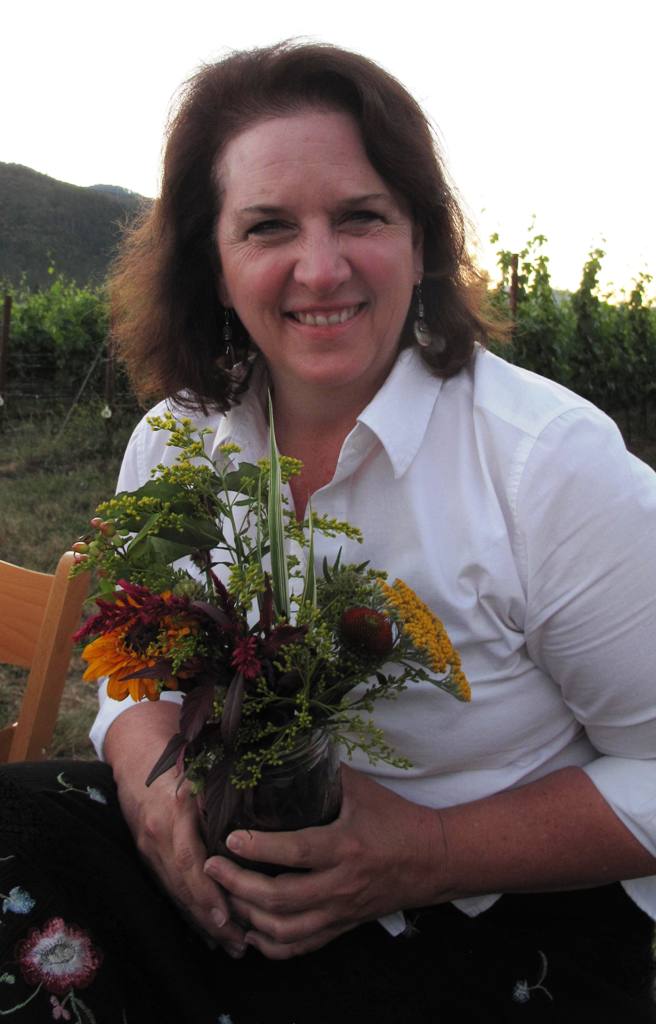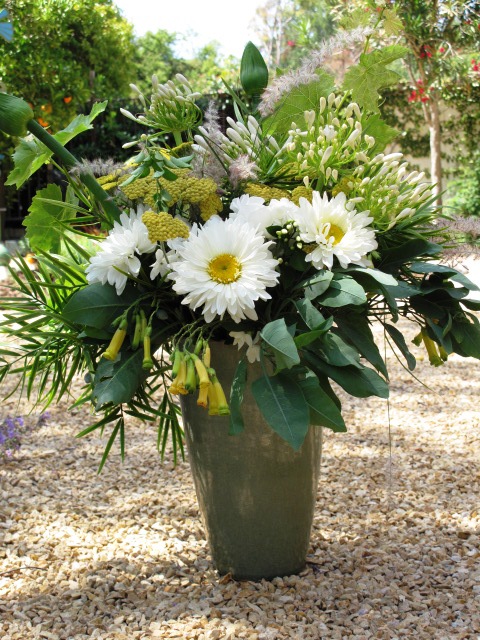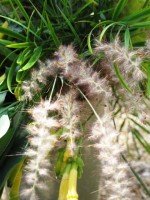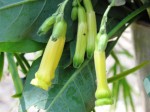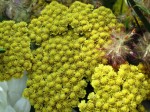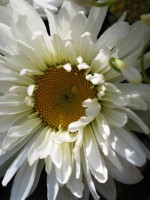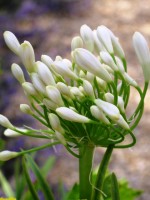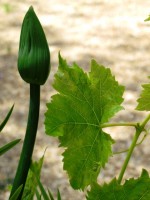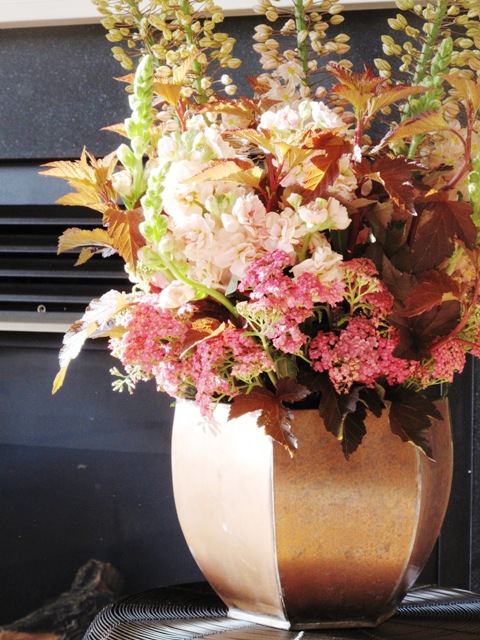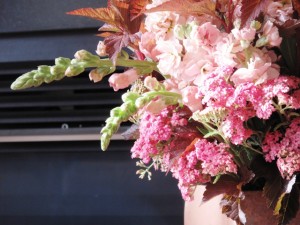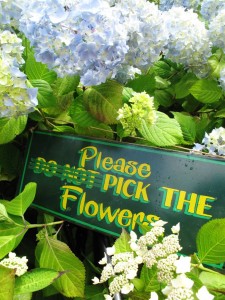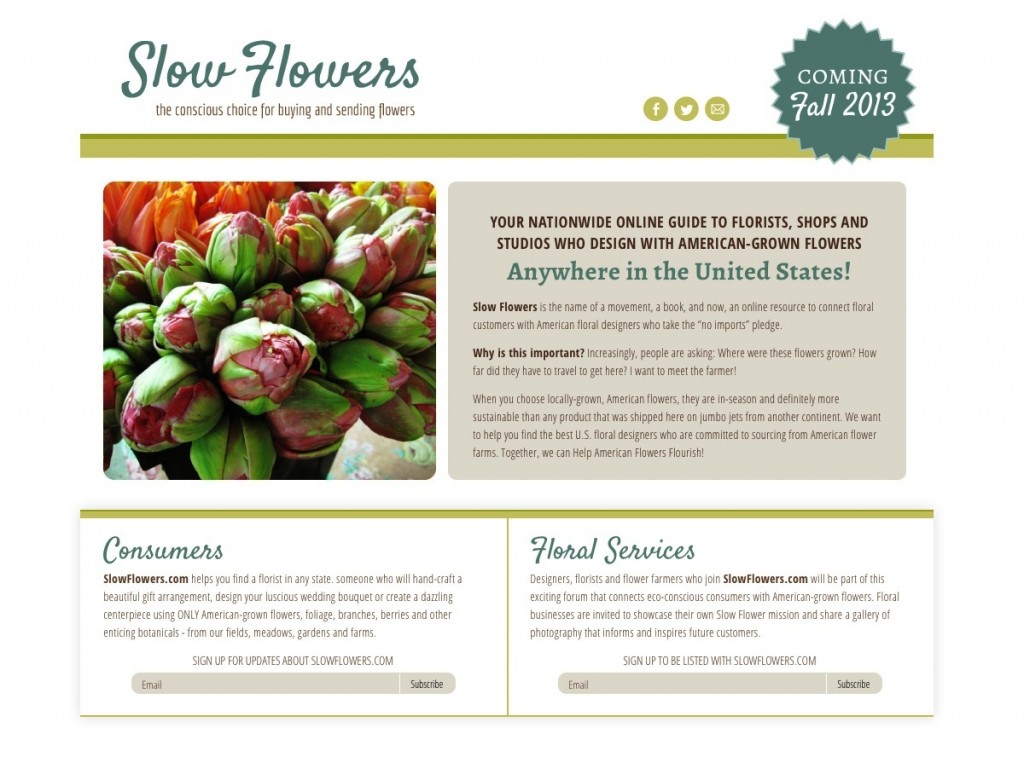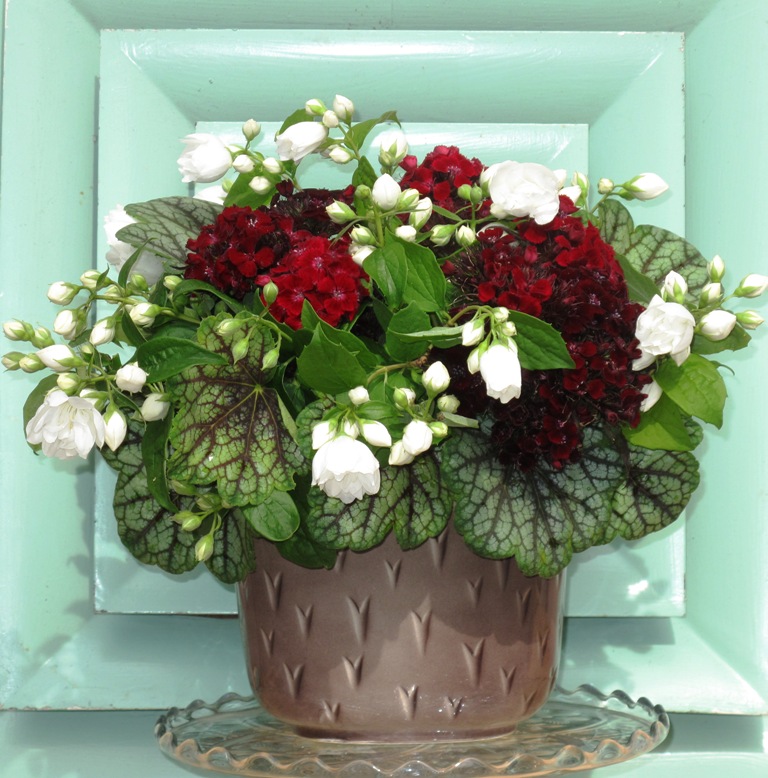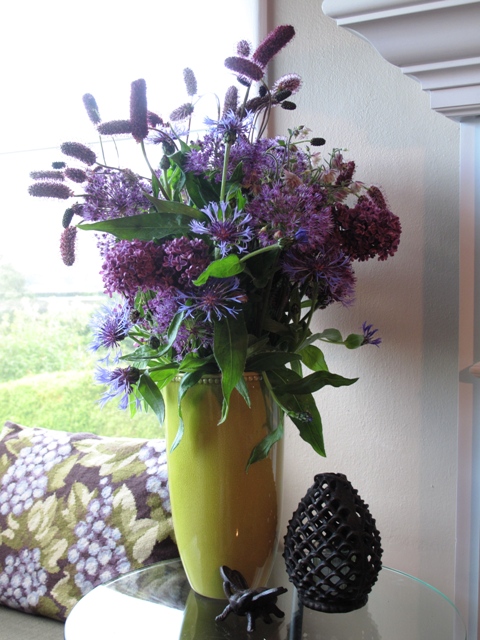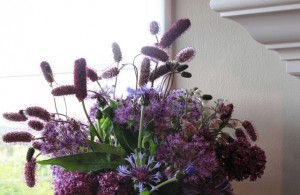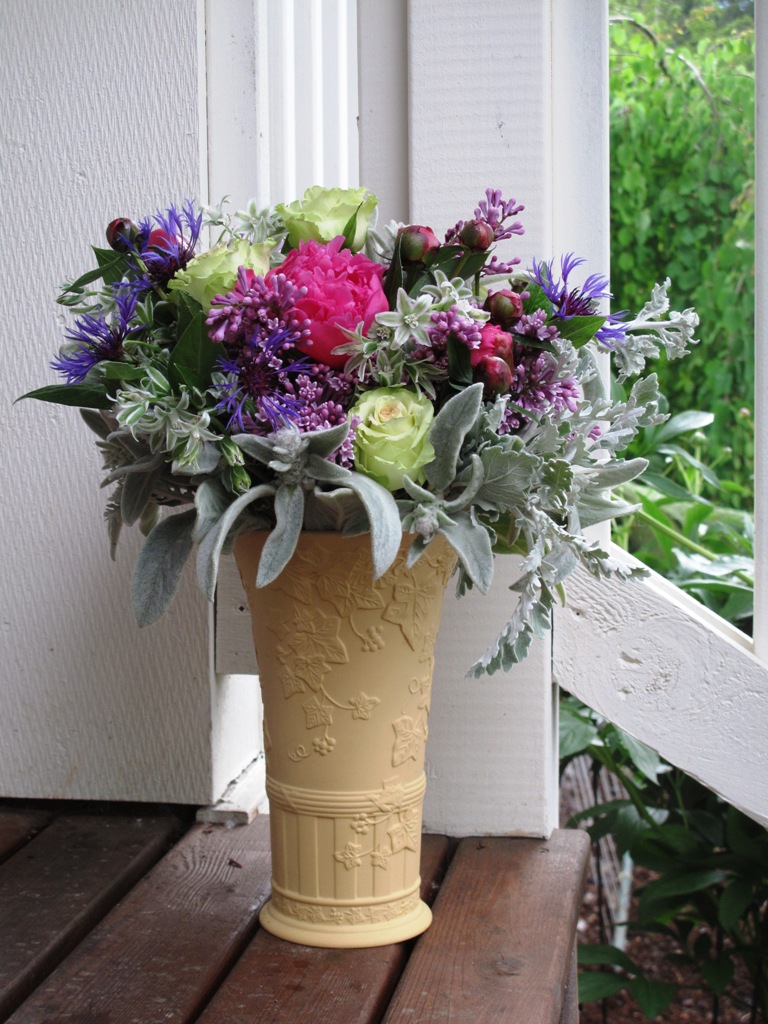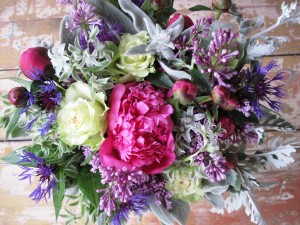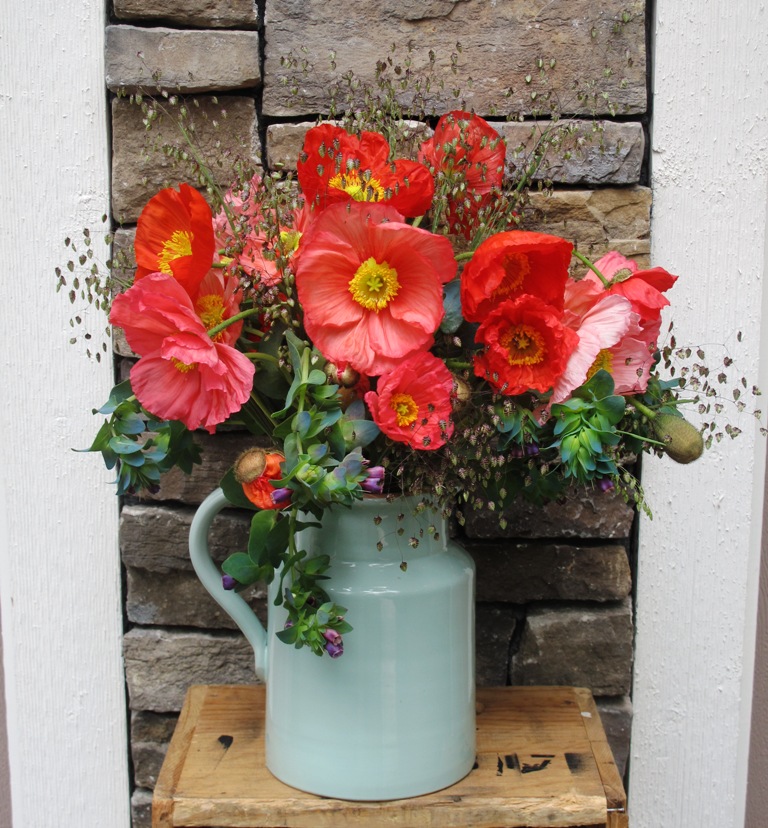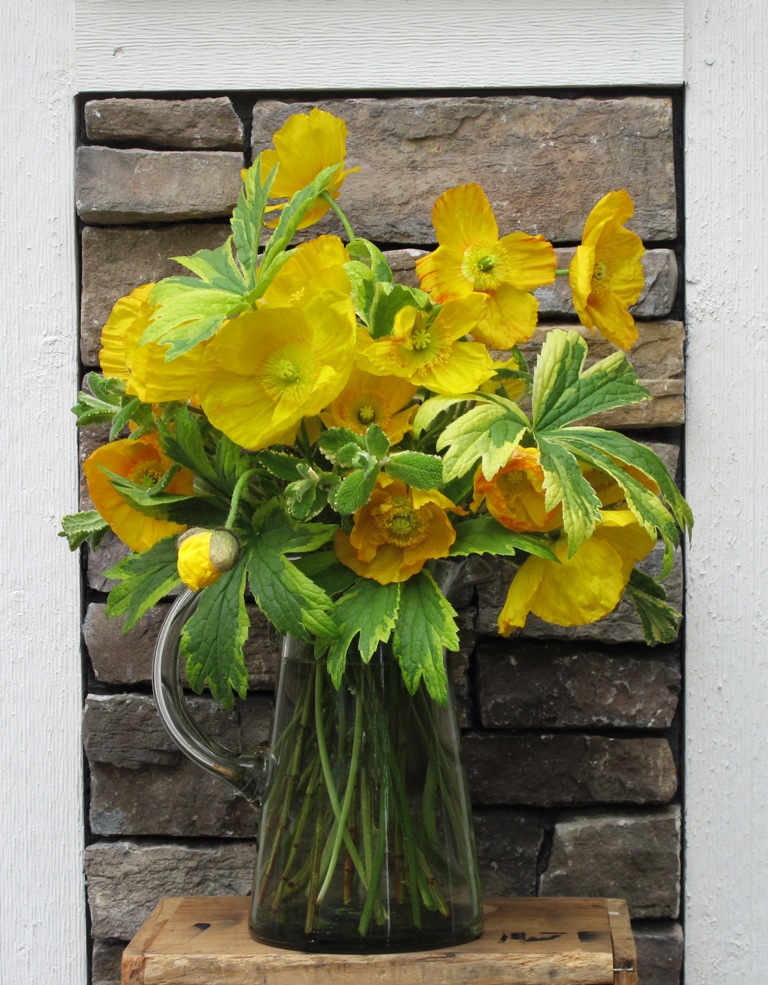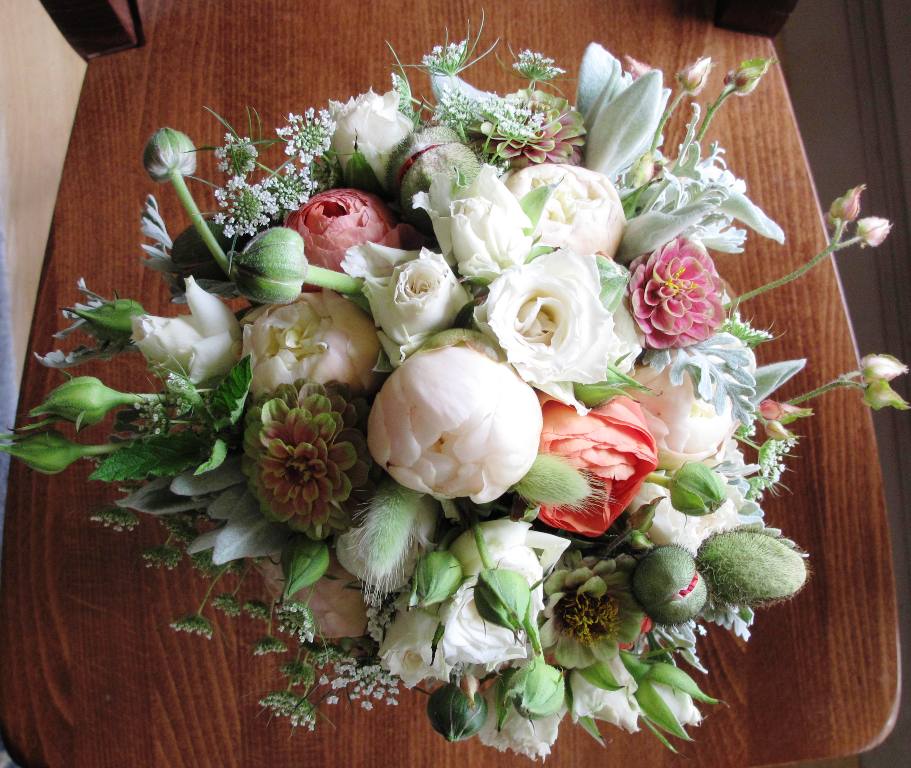AMERICAN ROSES
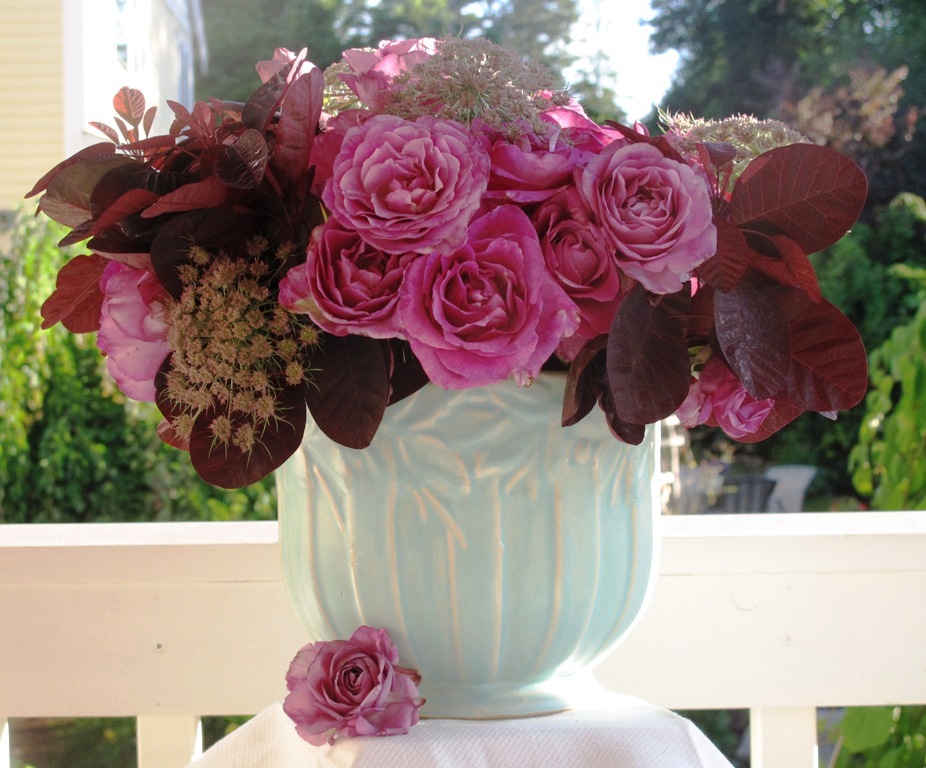
There are three sultry-smoky elements to this simple bouquet: roses, smoke bush foliage and a type of Queen Anne’s lace.
Ingredients:
Vase:
From the Farmer
When to cut for the vase: Commercial rose growers like Westmont Park Roses have special procedures for harvesting their flowers and processing them with a hydrating solution before making florist deliveries. The home gardener who grows old English roses and David Austin garden roses isn’t faced with these storage and delivery demands. Get the most out of your garden roses by cutting them when temperatures are coolest on the day you plan to arrange them. I like to pick a mix of roses at different stages to create more interest: in bud; slightly open; two-thirds open and fully open. This technique reminds grower John Martin of a single, beautiful grandiflora cluster, “with five or six roses, each at a different blooming cycle.”









